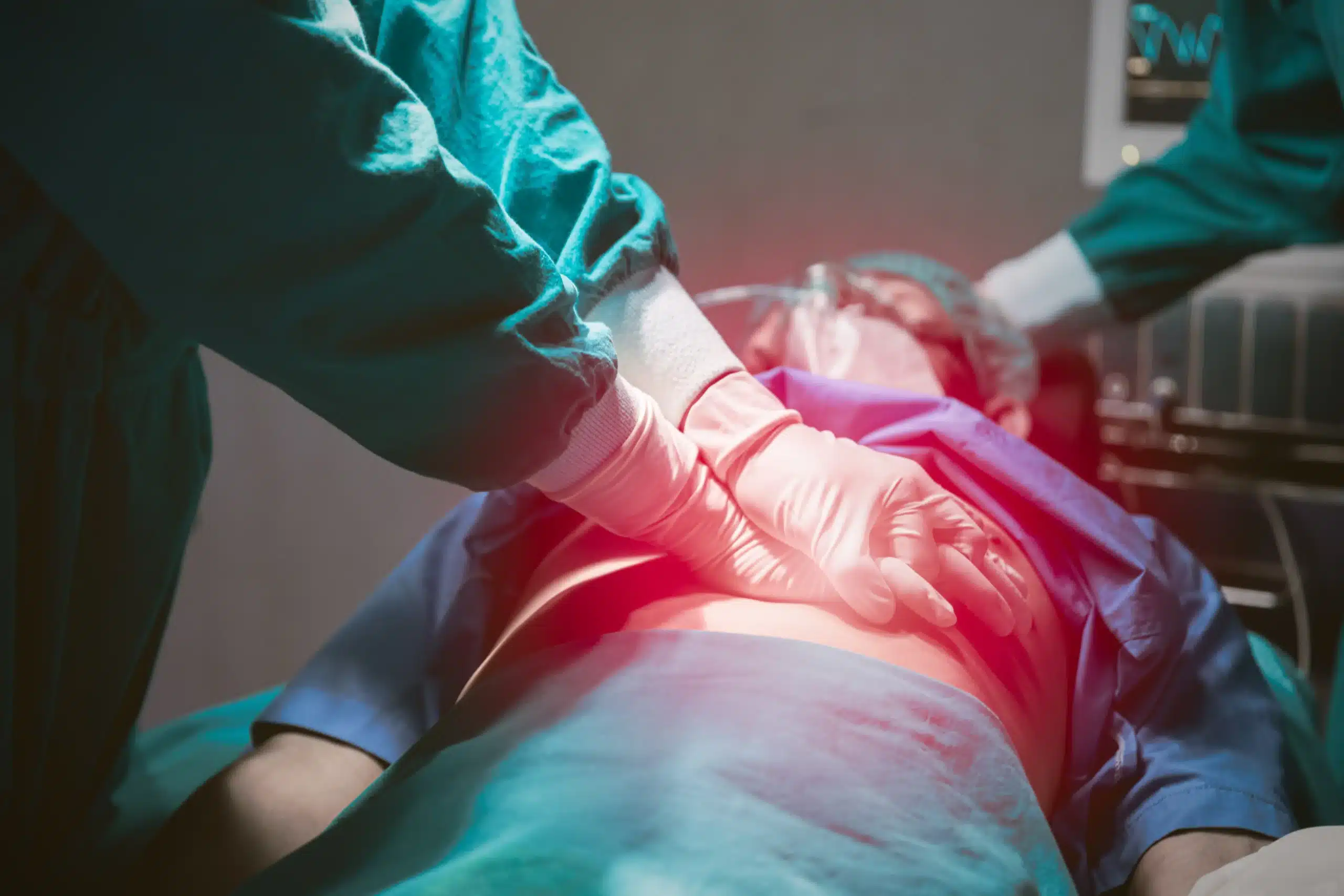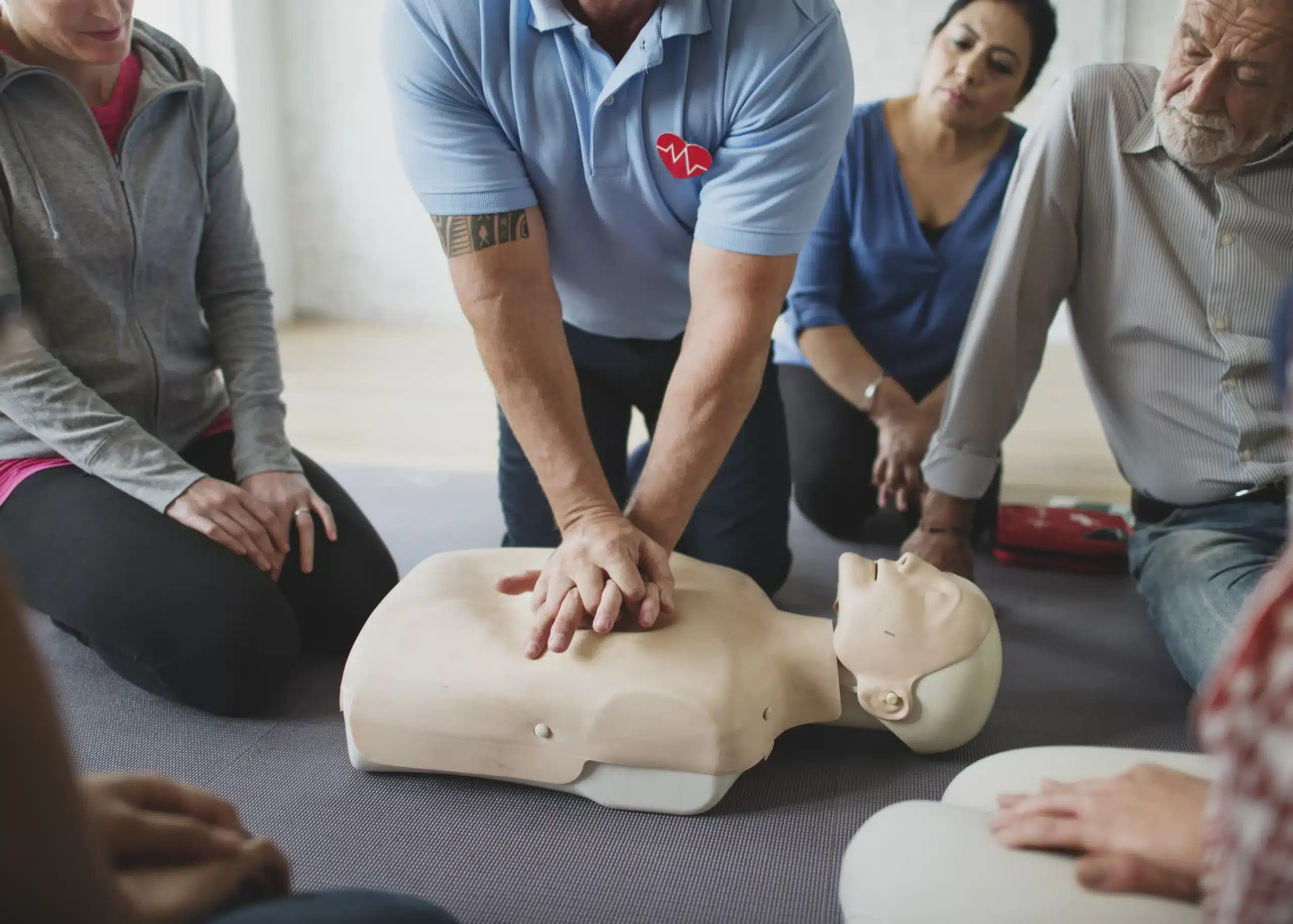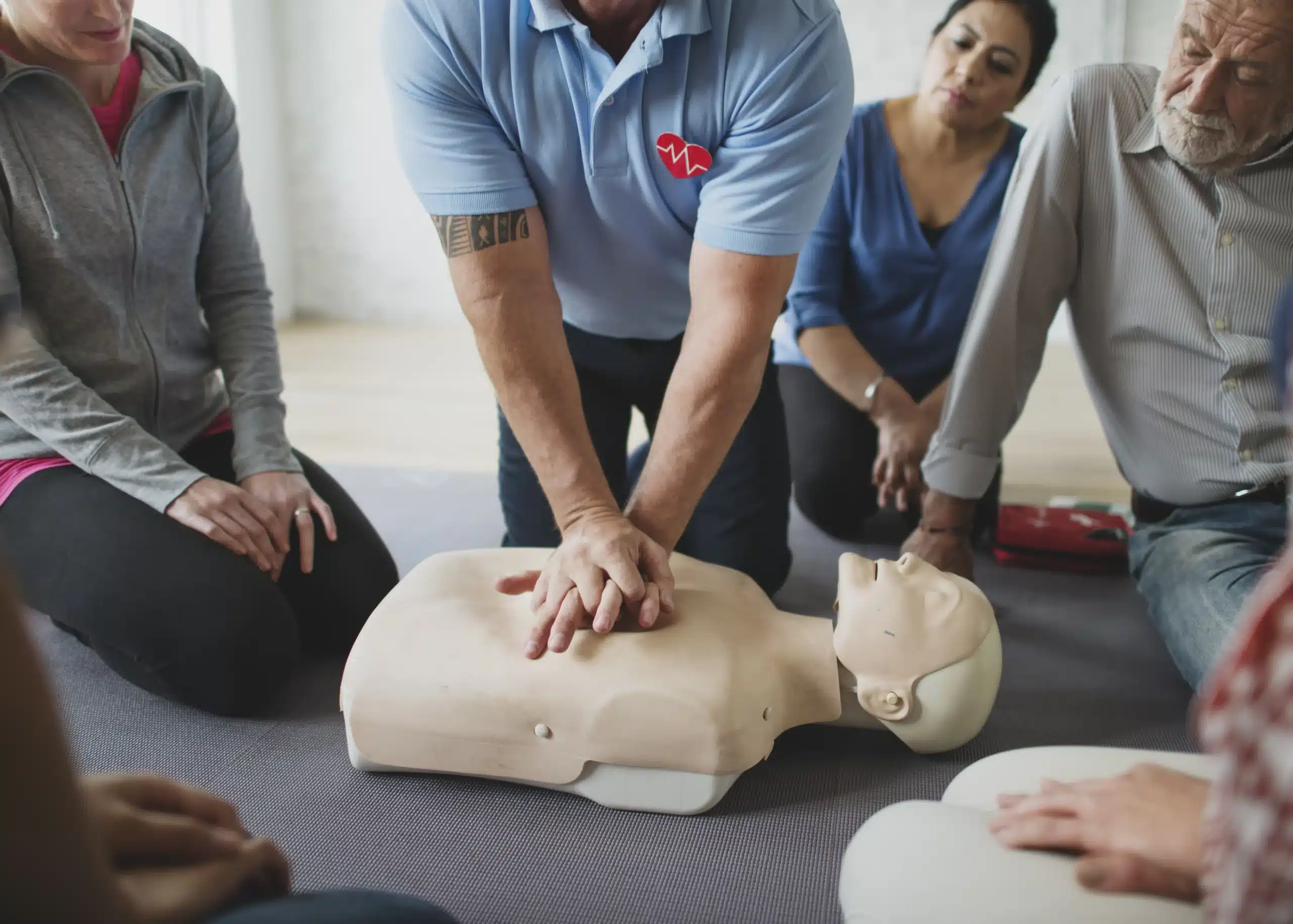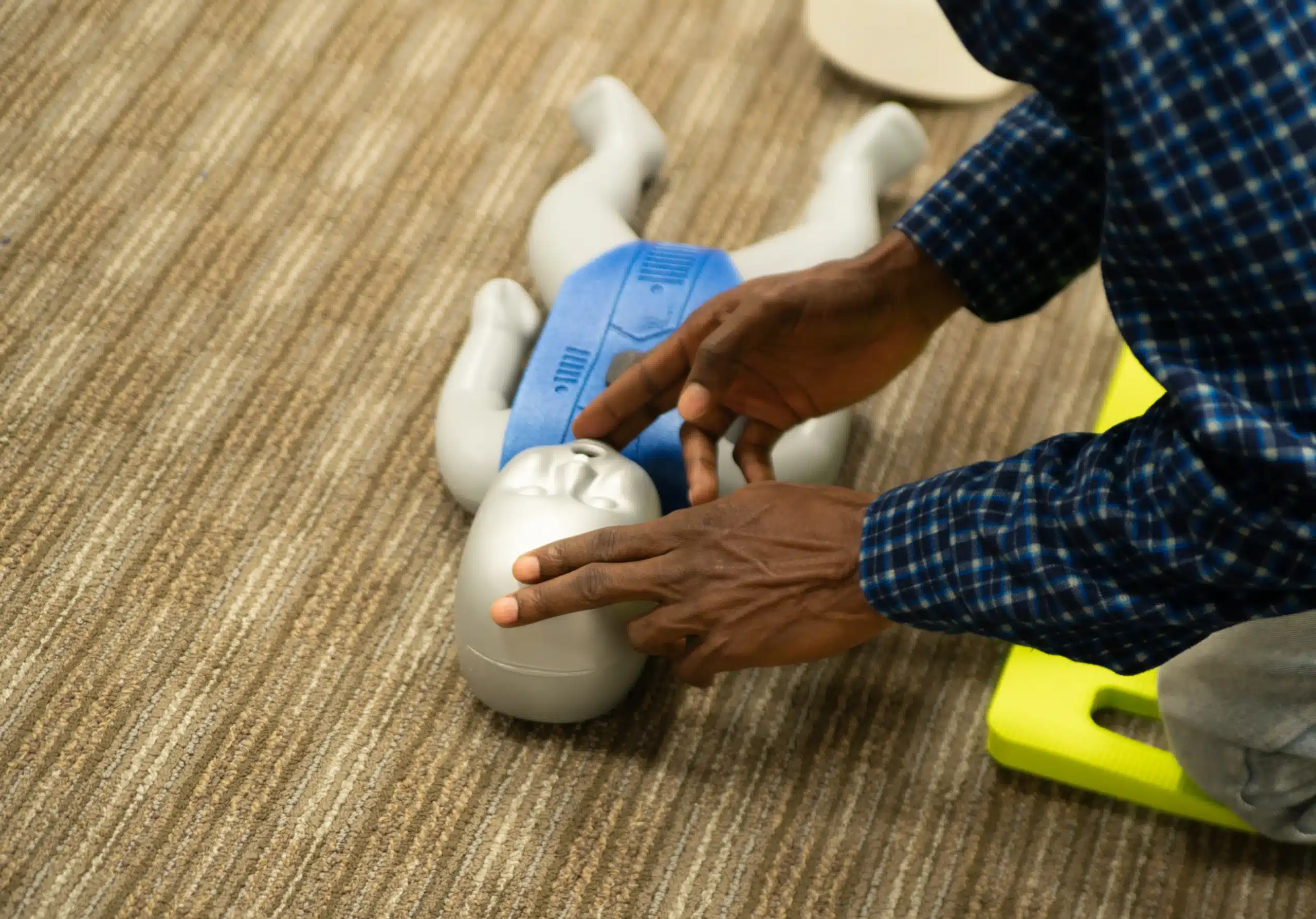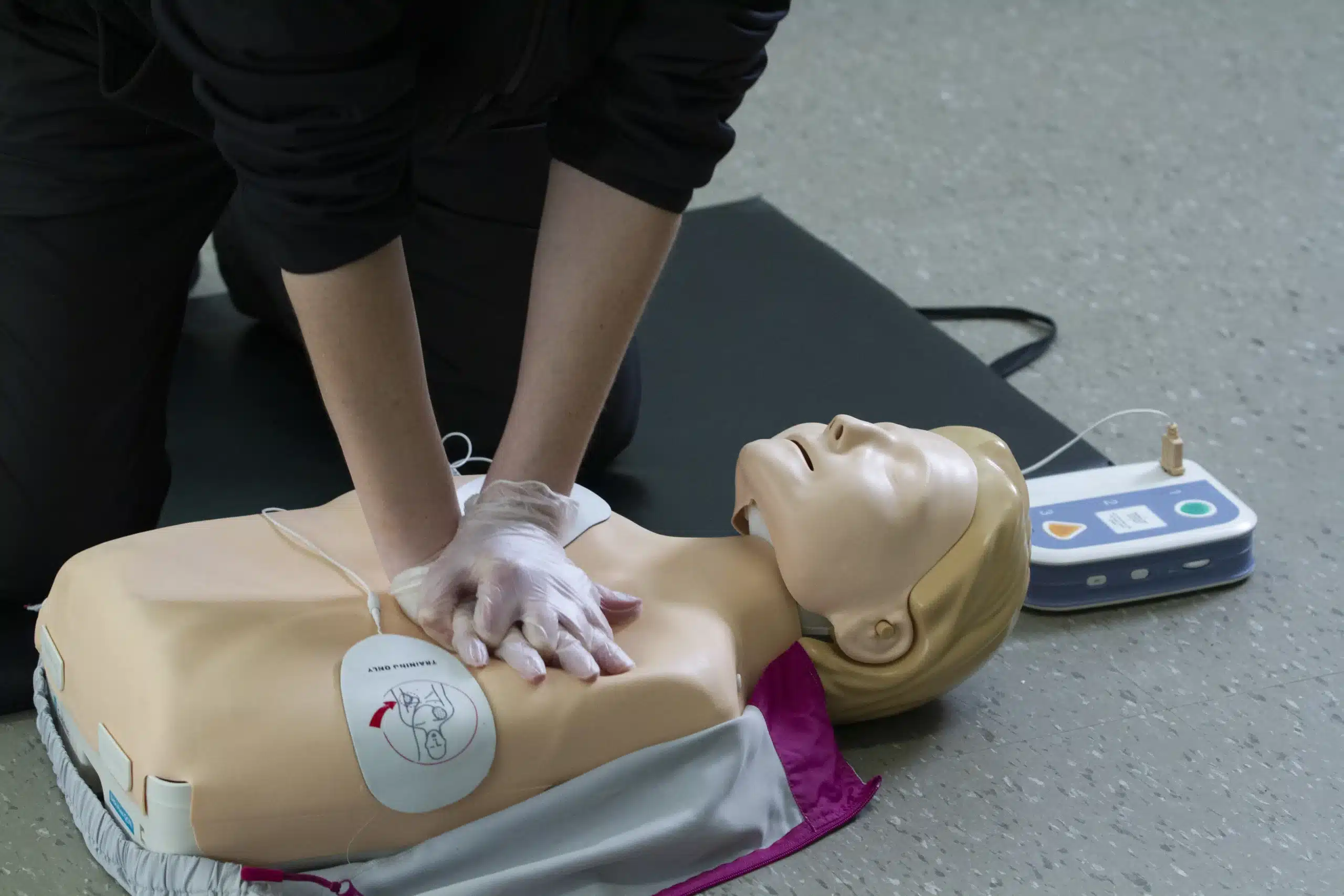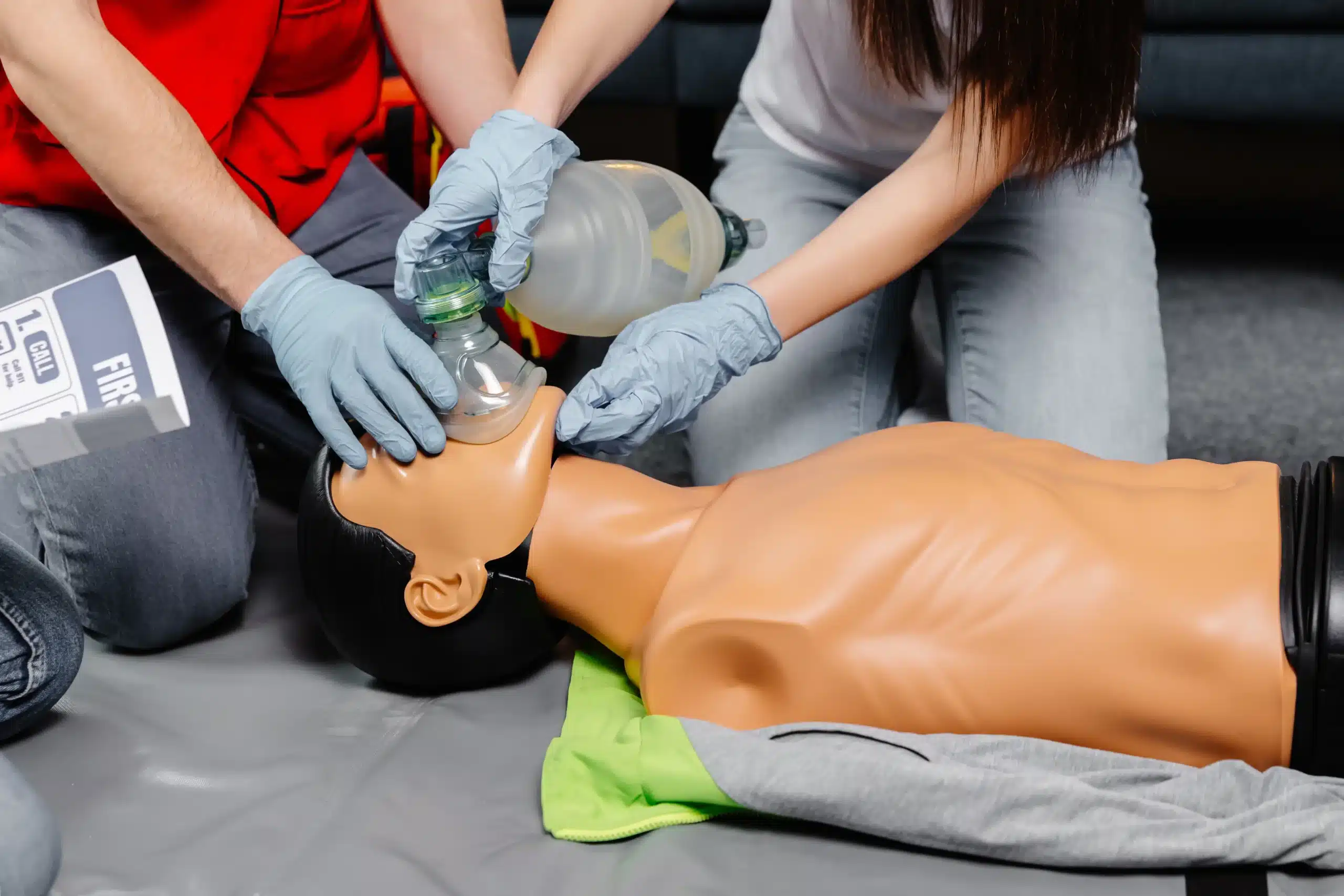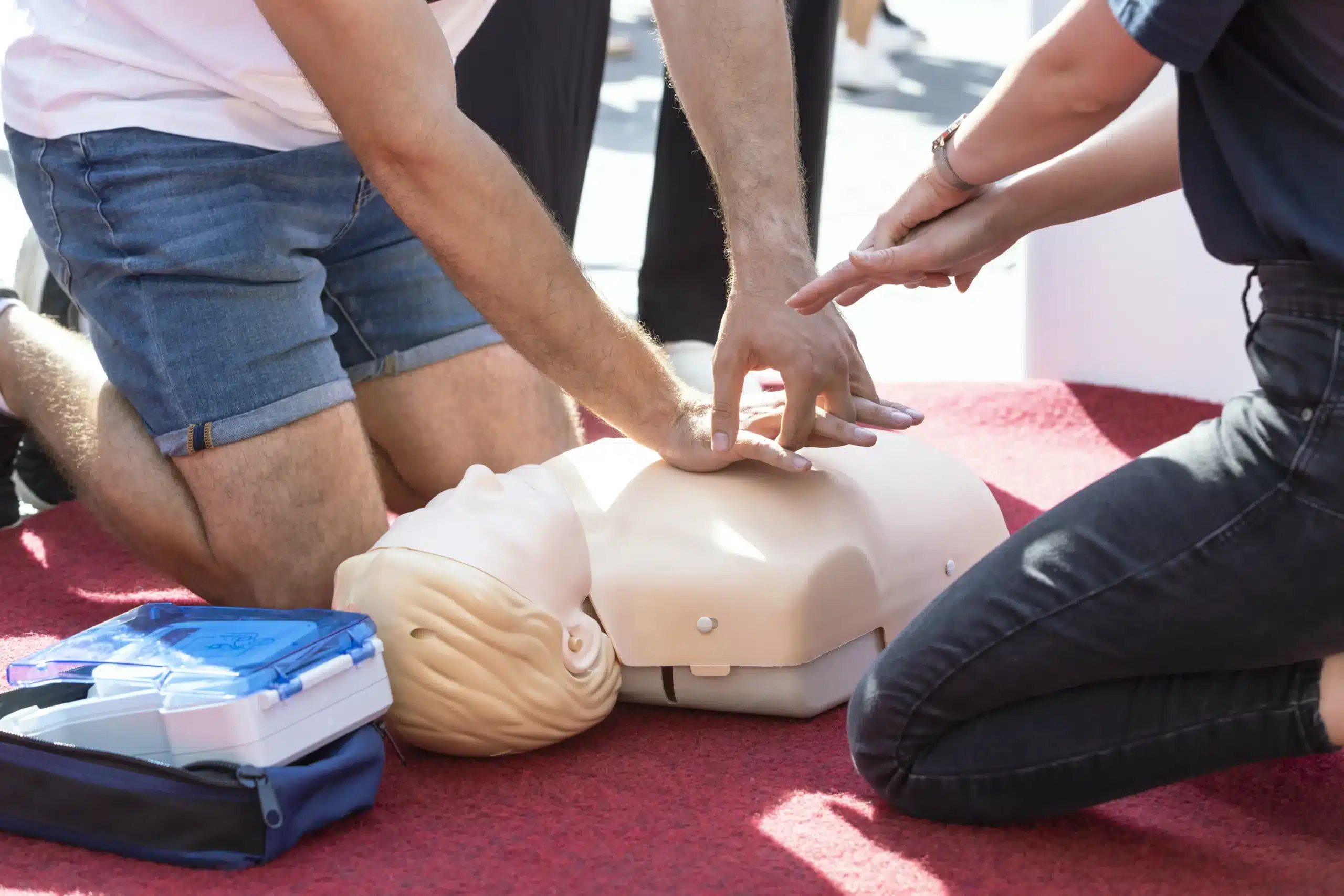In an emergency, seconds count. BLS certification equips you with the skills to provide immediate care during life-threatening situations. This guide breaks down the essentials of BLS, including what it is, why it’s important, and how to get certified. We’ll explore the various skills covered in BLS training, who can benefit from certification, and how to find “BLS certification near me.” We’ll also discuss different training formats, the certification process, associated costs, and tips for maintaining your certification. Finally, we’ll address common misconceptions about BLS and highlight the many advantages of becoming certified.
Key Takeaways
- BLS certification empowers you to save lives: Whether you’re a healthcare professional or not, BLS training equips you with essential skills to respond to medical emergencies, giving you the confidence to act when seconds count.
- Choose the right BLS course for your needs: Consider factors like accreditation, course format (in-person, blended, or online), cost, and instructor qualifications to find a program that fits your learning style and schedule.
- Maintain your skills and stay current: BLS certification is typically valid for two years. Renew your certification promptly and pursue continuing education opportunities to stay up-to-date with the latest life-saving techniques and best practices.
What is BLS Certification & Why is it Important?
Basic Life Support (BLS) certification equips you with the skills to respond to life-threatening emergencies. It’s about more than just CPR—BLS training covers a range of techniques to help adults, children, and infants in crisis. A BLS certification demonstrates your ability to provide immediate care until professional medical help arrives, which can make all the difference in situations like cardiac arrest, respiratory distress, or choking. Holding a current BLS certification shows you’re prepared to step up when it matters most.
BLS Training: Skills You’ll Learn
In a BLS course, you’ll master essential skills, including high-quality CPR for all ages, how to use an automated external defibrillator (AED), and relief techniques for choking victims. You’ll also learn to recognize the signs of someone having a heart attack or stroke. BLS training emphasizes teamwork and clear communication—vital skills in emergency situations. The goal is to give you the confidence to assess a scene, provide appropriate care, and potentially save a life.
Who Needs BLS Certification?
While often a requirement for healthcare providers and first responders, BLS certification is valuable for anyone. Teachers, coaches, childcare providers, and even parents can benefit from having these life-saving skills. BLS training empowers you to respond effectively in emergencies, whether at work, at home, or out in the community. It’s about being prepared and having the confidence to act when seconds count. If you’re looking to add a valuable skill to your resume or simply want to be prepared for anything, BLS certification is a smart choice.
Find BLS Certification Courses Near You
Finding the right BLS certification course means understanding your options. Here are a few ways to find training near you:
Online Course Locators
Several websites can help you find BLS courses by location, schedule, and certifying organization. When using these tools, confirm the courses offer internationally recognized certification. A reputable online course will meet established standards, ensuring your certification is widely accepted.
Local Training Centers
Hospitals and clinics often offer BLS certification courses for staff and the community. Check with hospitals, community centers, and local fire departments for established training programs that fit your schedule.
Campbell CPR Classes: Your Go-To AHA Training Center
Campbell CPR Classes offers various American Heart Association-certified BLS courses for healthcare professionals in and around Campbell, San Jose, and Cupertino. As a woman-owned AHA Training Center, they prioritize excellent customer service and offer the lowest prices in Santa Clara County, backed by a Low Price Guarantee. For a reliable and affordable option, contact them to learn more about their courses. They also offer group discounts.
Choose the Right BLS Training Format
Finding the right BLS training format depends on your learning style, schedule, and budget. Let’s break down the most common options: in-person, blended learning, and online courses. Each has its own advantages, so consider what works best for you.
In-Person Classes
Traditional in-person BLS certification courses offer a hands-on learning experience with direct interaction with an instructor. This format is great for those who thrive in a classroom setting and prefer face-to-face guidance. You’ll typically work with other students, practicing skills and asking questions in real-time. While in-person training often involves a fixed schedule, the focused environment can be beneficial. Expect to pay around $90 for initial certification and $60 for renewal.
Blended Learning
Blended learning combines online learning and in-person skills practice. This flexible format allows you to complete the coursework online at your own pace, then attend a shorter in-person session to demonstrate your skills. Blended learning is a convenient way to fit BLS training into a busy schedule, especially if you prefer self-directed learning but still value hands-on experience. Campbell CPR Classes offers a blended learning BLS course through the American Heart Association’s HeartCode program.
Online Courses
Fully online BLS courses provide maximum flexibility. You can complete the entire course from anywhere with an internet connection, making it ideal for those with unpredictable schedules or limited access to in-person training centers. However, it’s crucial to choose an accredited program to ensure your certification is internationally recognized and meets industry standards. Look for courses that offer interactive modules, videos, and simulations to reinforce learning, even without a physical classroom.
What Happens During BLS Training?
So, you’ve decided to get BLS certified—great! Now, you’re probably wondering what to expect. This section breaks down the BLS learning experience, from the topics covered to the hands-on practice and the final exam.
Course Duration & Key Topics
A typical in-person BLS course takes around 4.5 hours. During this time, you’ll learn essential life-saving techniques, including high-quality CPR for adults, children, and infants. The training also emphasizes teamwork and clear communication during emergencies. You’ll learn how to quickly assess a situation, perform chest compressions, give rescue breaths, and use an AED. Problem-solving is another key component, as you’ll practice different scenarios and learn how to adapt your skills. For more details on BLS, check out our BLS certification guide.
Hands-on Practice
BLS training isn’t just about lectures and videos—it’s highly interactive. You’ll spend a significant portion of the course practicing your skills on manikins. This hands-on practice is crucial for building muscle memory and confidence. Many organizations, including the American Red Cross, offer blended learning programs that combine online coursework with in-person skills sessions. This approach allows you to learn the theoretical concepts at your own pace before practicing with a certified instructor. At Campbell CPR Classes, we also offer the HeartCode BLS blended learning option.
The BLS Certification Exam
After completing the coursework and hands-on practice, you’ll take a BLS certification exam. This exam typically involves demonstrating your skills on a manikin in front of an instructor. You’ll be assessed on your ability to perform CPR, use an AED, and respond appropriately to various emergency scenarios. The instructors are there to support you! They’ll provide feedback and guidance throughout the training, ensuring you’re fully prepared. Once you pass, you’ll receive your BLS certification, which is valid for two years. Ready to get started? Contact us at Campbell CPR Classes to learn about our upcoming courses.
BLS Certification Costs: What to Expect
Getting BLS certified doesn’t have to break the bank, but it’s good to know what costs to expect. Let’s explore the typical price range for BLS certification and some smart ways you can save.
Average Price Range
BLS certification courses typically cost around $90 for initial certification, with renewal costing around $60. Keep in mind that these are average prices, and the actual cost can vary depending on where you live and the training provider. Some providers might try to overcharge, so it’s always wise to compare prices before signing up for a class. Check with a few different providers in your area to get a sense of the going rate. Online BLS courses sometimes offer more competitive pricing, so that’s another avenue worth exploring.
Group Discounts & Promotions
If you need to certify a team or group, many training providers offer group discounts, which can significantly lower the per-person cost. This can be a great way to make training more affordable for businesses or organizations. Reach out to training centers directly to ask about group rates and any special promotions they might be running. Campbell CPR Classes offers discounted group classes, a convenient option for those in and around San Jose, Campbell, and Cupertino.
Campbell CPR Classes’ Low Price Guarantee
For the best value on BLS certification in Santa Clara County, consider Campbell CPR Classes. They offer a Low Price Guarantee, ensuring you receive high-quality training at the most affordable price. They’re committed to excellent customer service and the lowest prices in the area. If you find a lower price for a comparable BLS course, they’ll match it. This makes them an excellent option for individuals and groups seeking top-notch BLS training that doesn’t break the bank. Contact them to learn more about current rates and how their Low Price Guarantee works.
Maintain Your BLS Certification
Keeping your BLS certification current is essential for providing effective, high-quality care. This section covers the renewal process, how long your certification lasts, and the importance of continuing education.
Renewal Process & How Long it Lasts
BLS certifications are typically valid for two years. To maintain your credentials and stay up-to-date with the latest life-saving techniques, you’ll need to complete a renewal course before your certification expires. Plan and schedule your renewal course in advance to avoid any lapse in your certification. This ensures you’re always prepared to respond to emergencies effectively.
Continuing Education Requirements
Even with a valid certification, continuing education is crucial for healthcare providers. Ongoing learning helps you refine your skills and stay informed about the latest advancements in BLS. Regularly reviewing updated guidelines and best practices ensures your skills remain sharp and aligned with current standards. Continuing education opportunities demonstrate a commitment to providing the best possible care and improving patient outcomes. This dedication to continuous improvement is a hallmark of a skilled and compassionate healthcare professional.
BLS Certification Myths: Debunked
Let’s clear up some common misconceptions about BLS certification. These myths often prevent people from getting trained, so we’ll set the record straight.
“BLS is Only for Healthcare Professionals”
This is a big one. While BLS certification is definitely a requirement for many healthcare jobs, anyone can benefit from these life-saving skills. Think about it: medical emergencies can happen anytime, anywhere. Knowing how to perform CPR, use an AED, and provide basic airway management can make all the difference until professional help arrives. These skills empower you to assist family members, friends, coworkers, or even strangers in need.
“BLS Training Takes Too Long”
Worried about squeezing BLS training into your busy schedule? Don’t be. BLS courses are designed to be efficient and flexible. Many providers offer condensed courses that can be completed in a single day or even a few hours. You can find options that fit your availability, whether it’s a weekday evening, a weekend session, or even a blended learning format that combines online modules with in-person practice. Check out Campbell CPR Classes for flexible BLS course options near you.
“Online BLS Courses Aren’t Enough”
Some people believe online BLS certification won’t give them the skills they need. However, many accredited organizations offer comprehensive online BLS training that meets industry standards. These courses often include interactive modules, videos, and simulations to ensure you learn the material effectively. While online courses provide the knowledge component, it’s essential to supplement them with hands-on practice to develop the muscle memory and confidence needed to perform BLS effectively in a real-life situation. Many providers offer in-person skills sessions to complement their online courses. Learn more about the different BLS training formats available.
Benefits of BLS Certification
Getting your BLS certification is more than just checking a box; it’s an investment in yourself, your career, and your community. Whether you’re a healthcare professional or not, BLS training offers valuable benefits.
Better Job Opportunities
BLS certification can open doors to a wider range of career opportunities. Many healthcare providers, first responders, and other professionals require this training. It signals to potential employers that you’re prepared to handle emergency situations and provide crucial life-saving assistance. Even in non-healthcare roles, having BLS certification can give you a competitive edge, demonstrating your commitment to safety and preparedness. If you’re considering a career in healthcare, BLS is often a prerequisite, so getting certified is a smart first step. Check out some BLS Certification FAQs for more information.
Life-Saving Skills & Confidence
BLS certification equips you with the practical skills and knowledge to respond effectively during medical emergencies. You’ll learn how to perform CPR, use an AED, and provide other essential life-saving techniques. BLS training also builds your confidence, empowering you to act quickly and decisively in critical situations. Knowing you have these skills can make a real difference, whether you’re at work, at home, or out in your community. It’s about being prepared to help others when they need it most. Learn more about BLS for Healthcare Providers.
Professional Growth
For healthcare professionals, BLS certification is a key component of ongoing professional development. It demonstrates a commitment to staying up-to-date with the latest life-saving techniques and best practices. Regularly renewing your BLS certification shows your dedication to providing high-quality care and strengthens your professional credentials. This ongoing training can also lead to greater responsibilities and career advancement within your field. By investing in your BLS skills, you’re investing in your future as a healthcare provider. Read more about how BLS benefits healthcare providers.
Choose the Right BLS Course Provider
Finding the right BLS course provider is just as important as the certification itself. It directly impacts the quality of your training and how potential employers view your credentials. Here’s what to consider:
Factors to Consider
- Accreditation: Look for a provider offering courses accredited by a nationally recognized organization like the American Heart Association (AHA). Accreditation ensures your BLS certification meets industry standards and is widely accepted.
- Course Format: Consider your learning style and schedule. Do you prefer traditional in-person classes, a blended learning approach (combining online modules with hands-on skills sessions), or a fully online course? Choose a provider with a format that works for you. Campbell CPR Classes offers the blended learning format.
- Quality of Course Materials: Comprehensive and up-to-date materials are essential. Inquire about the curriculum and what resources are provided (textbooks, videos, online modules, etc.). The quality of these resources will significantly impact your learning experience.
- Instructor Qualifications: Experienced, certified instructors can make a big difference. Check if instructors have AHA certification and a solid healthcare background. Their expertise provides valuable guidance and feedback.
Top BLS Certification Providers
Several organizations offer excellent BLS certification courses. Here are a few reputable options:
American Heart Association (AHA)
The AHA sets the standard for CPR and emergency cardiovascular care. Their comprehensive training programs are highly respected in the healthcare field. AHA certification is often a top requirement for hospitals and other healthcare employers.
American Red Cross
The American Red Cross is another respected provider of BLS certification. They offer various course formats, including in-person and blended learning, making their training accessible to a broader audience.
Campbell CPR Classes
Campbell CPR Classes provides AHA-accredited BLS training in a convenient blended learning format. This allows you to complete the online portion at your own pace, followed by an in-person skills session to practice your techniques. They also offer a low-price guarantee for their courses.
National Safety Council (NSC)
The NSC offers BLS training recognized across various industries. Their courses often emphasize workplace safety, making them a good choice if you need certification for your job.
Tips for BLS Certification Success
Getting your BLS certification is a rewarding experience. Here are a few tips to help you succeed:
Choose a recognized training provider. A reputable provider, like the American Heart Association, will offer internationally accepted certification that meets industry standards. This ensures your certification is valuable wherever you go. For those in and around Campbell, San Jose, and Cupertino, Campbell CPR Classes is a woman-owned AHA Training Center committed to excellence and affordable pricing. They even offer advanced training like RQI classes.
Understand the course format. BLS certification courses come in different formats. Blended learning, combining online coursework with in-person skills sessions, offers flexibility. Consider your learning style and schedule when selecting a format.
Think about the cost. While BLS certification is an investment, it shouldn’t break the bank. Look for providers with transparent pricing and consider those offering a low price guarantee. Discounts for group classes can be a great option for workplaces or groups of friends.
Use high-quality learning materials. Comprehensive materials are essential for effective learning. Look for courses that provide up-to-date resources, videos, and practice tests.
Check the instructor’s qualifications. Experienced, certified instructors can make all the difference. Ask about an instructor’s background and experience before enrolling. If you have questions, contacting the training center directly is always helpful.
Related Articles
- BLS Training Near Me: A Practical Guide – Campbell CPR Classes
- BLS Certification in Cupertino for Healthcare Providers – Campbell CPR Classes
- BLS Renewal Near Me: Find the Right Course – Campbell CPR Classes
- BLS Recertification Near Me: A Complete Guide – Campbell CPR Classes
- Your Guide to BLS Classes in San Jose – Campbell CPR Classes
Frequently Asked Questions
Is BLS certification only for healthcare professionals? No. While it’s often required in healthcare settings, anyone can benefit from BLS training. From parents and teachers to office workers and construction crews, having these skills can make a difference in any emergency. It’s about being prepared to help anyone, anywhere.
How long does a BLS course take, and what does it cover? A typical BLS course takes about 4-5 hours and covers essential life-saving techniques like CPR, AED use, and how to help someone who’s choking. You’ll also learn about teamwork, communication, and how to assess an emergency situation effectively.
What’s the difference between in-person, blended learning, and online BLS courses? In-person classes offer a traditional classroom experience with face-to-face instruction. Blended learning combines online coursework with an in-person skills session, giving you flexibility and hands-on practice. Online courses offer the most flexibility, allowing you to complete the training at your own pace from anywhere with internet access.
How much does BLS certification cost, and how can I save money? BLS certification typically costs between $60-$90, with renewal often being slightly less expensive. Look for group discounts if you’re certifying with friends or colleagues. Some providers, like Campbell CPR Classes, also offer a low-price guarantee.
How do I renew my BLS certification, and how long is it valid? BLS certification is usually valid for two years. You’ll need to take a renewal course before it expires to keep your skills current. Check with your certifying organization or training provider for details on the renewal process.


